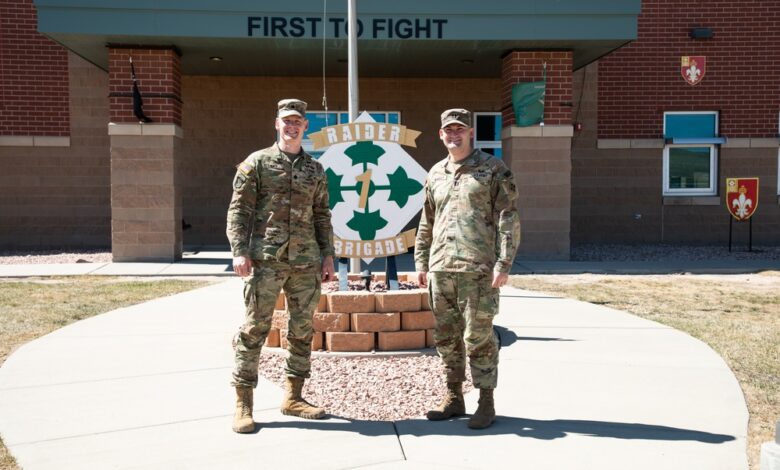DVIDS – News – The Project Prevention Journey: Raider Analytics, Innovation, and Data Team (RAID-T) Efforts to Forecast and Reduce Harmful Behaviors

“The Army gave me a skillset and I am now able to use it to ignite change as a Battalion Commander. The Army needs data that is easily accessible and understandable. Data can aid our command teams with the knowledge they need to be active and not reactive. That is why we created the Raider Brigade Data Analytics Team.” -Lt. Col. Jon Bate, Battalion Commander, 2nd Battalion 23rd Infantry Regiment, 1st Stryker Brigade Combat Team.
Fort Carson, Colo—What initially seemed to be a challenge for one unit within the 1st Stryker Brigade Combat Team (1SBCT), evolved into a novel volunteer team of software and data analytic developers titled the Raider Brigade Analytics, Innovation, and Data Team (RAID-T). RAID-T has since been on a “Prevent” journey to reduce harmful behaviors across formations through the collection and analysis of data.
RAID-T designed a new and innovative tool called the Unit Risk Forecasting Tool (URFT) to help reduce harmful behavior. The predictive tool can identify and enable intervention for “at-risk” groups at the Company, Battery, and Troop levels.
“Data analytics fuels innovation for progress towards making a better Army. I want it to be accessible to measure something that interests us and then to make it useful,” said Lt. Col. Bate. “What if something we can’t see across 4400 Soldiers is connected to measure things, we don’t want across formations like suicide, sexual harassment, violent events, DUIs, etc.”
On January 27, 2024, RAID-T piloted URFT across formations in 1SBCT. The tool is based on regression analysis of 1/4 SBCT Significant Incident Reports (SIRs) from 2021 to present (5,180 total observations), which the Brigade PMO, CPT Brendon Wamsley painstakingly recorded. The analysis to reveal a striking pattern in SIRs: when a CBT experienced two or more SIRs in a three-week period, it had a 20 percent probably of an SIR in the current week—twice the rate of a unit with zero SIRs in the same time period.
Discovery of this “Momentum Effect” was not simply academic curiosity but drove leader action. CPT Wamsley built this tool on Power BI in order to automatically send alerts to Command Teams and organic prevention teams, including Unit Ministry Teams, Military and Family Life Counselors, Army Substance Abuse Program personnel, Behavioral Health officers, and Ready and Resilient Teams to address underlying unit issues before the future harmful behaviors occur. The URFT acts as a prevention tool, tracking accumulation of SIRs and when they reach a the two SIR threshold.
“This tool allows Command Teams to focus resources at a specific time when companies are at risk. Resources are finite, but now we are able to pull resources tailored to our at-risk populations that has been more effective to our units,” said CPT Brendon Wamsley. “We now have the ability to pull our CARE team to go speak and interact with our “at risk” population at once if needed, which aids our Soldiers and Command Teams more effectively.”
The 1SBCT Brigade Commander, Col. Anthony Keller, was a driving force for the creation of the data analytics team through his encouragement to find a creative solution that aided command teams to become proactive in the prevention of harmful behaviors that affect our force.
“The drive for change and a creative solution for harmful behavior prevention originally stemmed from the stream of SIRs in my HHC Company. I had to ask myself, ‘What can I do as the Battalion Commander to focus my attention on the most important thing in my formation?’—which was my Soldiers and their Families,” said Lt. Col. Bate. “I did what I knew best, I began to collect data in hopes of finding a solution. That’s when I decided to find a team of software developers, coders, and data scientists across the brigade to form what we now call the RAID-T. The team is similar to a tech start-up. It’s a coalition of the willing. We met as needed when we began to ramp up our software program.”
RAID-T is now looking to expand its data sample size from not only units in the Brigade but also across Fort Carson and several other military installations. “We are looking to get a bigger pool of data to have more accurate predictions,” said Lt. Col. Bate.
Currently, RAID-T pushes out alerts to 1SBCT Company, Battery, and Troop-sized formations to aid Commanders with the knowledge needed to create interventions before harmful behaviors spread across units.
“My company was one of the first formations that received an alert from URFT. URFT masses resources to determine if a unit may need help…” said Cpt. Dalton Mills, 2-23 Infantry, FSC Company Commander. “I had resources talk to was deemed to be my ‘at-risk’ formation and it helped me narrow my focus and energy on additional resources. It is going to take time to see the long-term effects of this tool, but it helps commanders at echelon receive help without having to ask and before issues could get worse.”
RAID-T has initiated plans to not only expand its data pool but also work collaboratively with the Headquarters, United States Department of the Army (HQDA) team with external resources to enable the expansion of URFT across the Army.
“A designated group and more resources would help us significantly. Necessity drives innovation. It is clear that everyone is working on this problem, the only difference is that we are closer to it,” said Lt. Col. Bate.
The innovative URFT by RAID-T demonstrates 1SBCT’s dedication to the well-being of Soldiers. RAID-T has goals to spread the usage of this tool to all leaders as a means to create safer and more resilient teams throughout the U.S. Army.
| Date Taken: | 04.15.2024 |
| Date Posted: | 04.18.2024 12:32 |
| Story ID: | 468845 |
| Location: | FORT CARSON, CO, US |
| Web Views: | 8 |
| Downloads: | 0 |
PUBLIC DOMAIN
This work, The Project Prevention Journey: Raider Analytics, Innovation, and Data Team (RAID-T) Efforts to Forecast and Reduce Harmful Behaviors, by 1LT Taylor Graham, identified by DVIDS, must comply with the restrictions shown on https://www.dvidshub.net/about/copyright.



